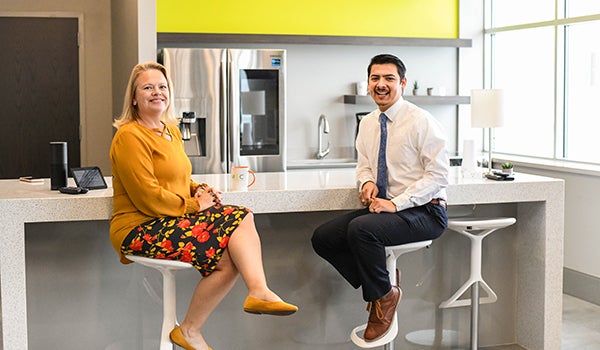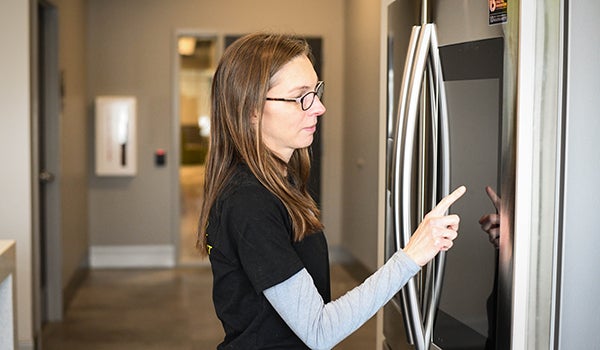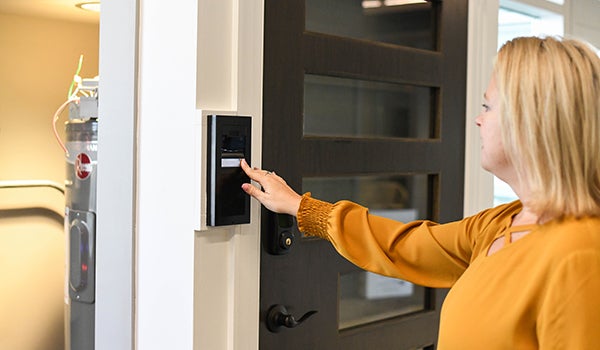MEC creates a place for smart devices, promotes smart homes
Published 8:48 am Saturday, March 7, 2020
CASSOPOLIS — Candy Realm starts off every morning with a simple phrase.
“Good morning, Alexa.”
The smell of coffee fills the air as an integrated program coordinated through the Amazon Alexa turns on her coffee pot, turns the lights on in her kitchen and even turns on her Christmas lights outside.
In her daughter’s bedroom, Alexa delivers the morning weather report.
With a ding in her son’s room, Alexa wakes him up with an alarm.
Realm, the vice president of marketing at Midwest Energy and Communications headquartered in Cassopolis, is aware of the benefits of a connected home.
For years, she has used devices like the Nest Thermostat, Ring Doorbell and a Chamberlain Garage Door Opener to make her life easier. The thermostat has learning capabilities to detect when she is not home. The doorbell lets her see when packages are being delivered via a video monitoring system, and the garage door opener ensures her garage door is never left open after she leaves the house.
“You personalize it to what you want and what you like. It really does start to make things simpler. The more you use it, the more you go, ‘Oh, I had no idea it did that.’ They come up with all kinds of fun, weird things,” Realm said.
Realm is not alone in turning to smart devices. The global smart home market is forecast to reach more than 53 billion U.S. dollars by 2022, according to statista.com.
Similar smart home capabilities are housed at MEC’s headquarters in the “Internet of Things Room,” where users navigate interconnected devices by using Amazon’s Alexa and Google Assistant to close a gap.
The room’s purpose is to introduce customers to devices capable of running through high speed internet. Set up like an actual home, customers can tour the showroom as they sit on a couch surrounded by several smart TVs, a fully functional kitchen and a wide window complete with blinds that can be opened and closed using an iPad.
“When we had the opportunity to look at a new building and talk about the experience for our customer base, we knew we were going so much deeper into technology, especially with the fiber service we were bringing to rural America,” Realm said. “We wanted to get them a place where they could come in and experience these things and it not be intimidating or scary.”
The space is intenionally open and accessible with customer service support offered. There is a wide array of devices in this “smart home” from simple to use devices like the Amazon Echo Dot, and more complex and expensive devices like the Samsung Smart Refrigerator with a touchscreen situated on the front door, originally priced at $3,229.
MEC’s mission is to provide high speed internet and electricity to rural areas. While advancing this mission ,it takes into account that 60 percent of its demographic are mature adults.
Sergio Moreno, a technical solutions agent at MEC, said the space yields questions surrounding how to use new internet and featuring devices from an array of demographics.
Moreno explained how expensive devices mean nothing without the bandwidth of internet to support them, and as users add more devices into a home, more internet capability will be required.
A common phrase Moreno hears from customers entering the “Internet of Things Room” is “I don’t think I’m there yet.”
While the showroom is a designated no pressure area, Realm explained how users can speak with doctors at home through a FaceTime portal without having to brave 12 inches of snow and how customers can use Facebook portal to speak with family members across town or across the country.
“There is a lot the [older demographic] wants to know how to use,” Realm said. “I think they feel a little bit scared because it’s not part of what they grew up with, but that doesn’t mean they aren’t interested.”
With a location across the street from the Cass County Council on Aging, MEC has hosted classes on how to use devices.
“[The elderly] are hungry to know more. They just want someone to take that time with them,” Realm said. “We get plenty of people from other demographics that want to talk about it. When you can really sit down and focus on things they enjoy, the one on one conversation and commodity, it’s more than education. It’s the relationship.”
Moreno sees how these relationships ease people’s fears about using the technology. In his job, he encourages customers to bring in their own smartphones and tablets. If they are unaware of how they work, he walks them through the steps. He starts off simple with texting or how to do a video chat. He has seen people’s faces glow when they hear they can chat with their children or grandchildren in real time video.
“It did that for my father,” Moreno said. “My father was one of those flip-phone all the way people. Low and behold, a grandchild came by, and I showed him a live video of the little one doing little baby things and he just said, ‘Welcome.’”
For smart homes, Moreno believes the devices shown in the “Internet of Things Room” are just the beginning.
“Every day, as we are speaking, there is so much more,” he said. “It’s no longer just your phone, computer or laptop. It’s your watch, doorbell and camera system. It’s your crockpot. Everything that can be connected, they are trying.”
As Moreno pulled a short, pale white stool from the room to take a seat, he said there are even capabilities that can train a robotic stool to follow users predicting where they will sit down.
“There are so many things that are coming up that you don’t even think about,” he said.









